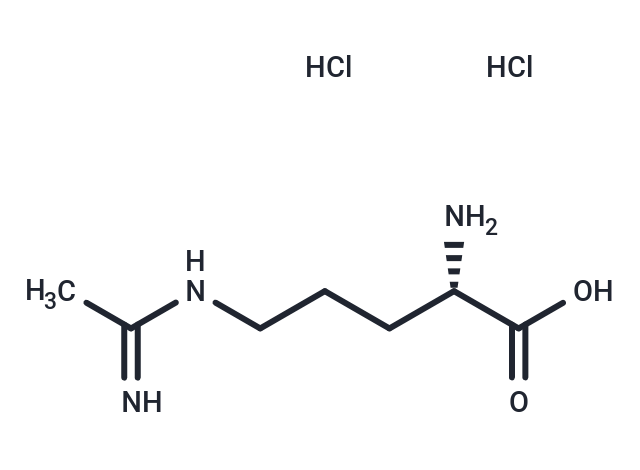Shopping Cart
- Remove All
 Your shopping cart is currently empty
Your shopping cart is currently empty

L-NIO dihydrochloride, a potent and non-selective NADPH-dependent nitric oxide synthase (NOS) inhibitor, consistently induces focal ischemic infarct in rats. It exhibits inhibitory constants (Kis) of 1.7, 3.9, and 3.9 μM for neuronal (nNOS), endothelial (eNOS), and inducible (iNOS) forms, respectively.


| Description | L-NIO dihydrochloride, a potent and non-selective NADPH-dependent nitric oxide synthase (NOS) inhibitor, consistently induces focal ischemic infarct in rats. It exhibits inhibitory constants (Kis) of 1.7, 3.9, and 3.9 μM for neuronal (nNOS), endothelial (eNOS), and inducible (iNOS) forms, respectively. |
| Targets&IC50 | iNOS:3.9 μM (ki), nNOS:ki: 1.7 μM , eNOS:3.9 μM (ki) |
| In vitro | L-NIO is a non-selective,potent and NADPH-dependent nitric oxide synthase (NOS) inhibitor, with Kis of 1.7, 3.9, 3.9 μM for neuronal (nNOS), endothelial (eNOS), and inducible (iNOS), respectively. |
| In vivo | L-NIO ?causes focal cerebral ischemia in the adult rat brain. |
| Molecular Weight | 209.67 |
| Formula | C7H16ClN3O2 |
| Cas No. | 159190-44-0 |
| Relative Density. | no data available |
| Storage | Powder: -20°C for 3 years | In solvent: -80°C for 1 year | Shipping with blue ice. | |||||||||||||||||||||||||||||||||||
| Solubility Information | DMSO: 33.33 mg/mL (135.42 mM), Sonication is recommended. H2O: 50 mg/mL (203.14 mM), Sonication is recommended. | |||||||||||||||||||||||||||||||||||
Solution Preparation Table | ||||||||||||||||||||||||||||||||||||
DMSO/H2O
| ||||||||||||||||||||||||||||||||||||

Copyright © 2015-2024 TargetMol Chemicals Inc. All Rights Reserved.